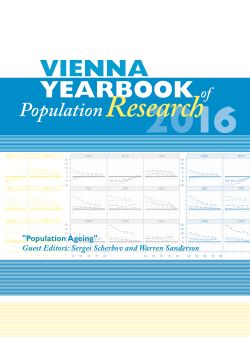
Vienna Yearbook of Population Research 2016, pp. 131-154, 2024/12/12
Special issue on “Population ageing”

While traditional measures of population ageing are bound to the concept of chronological age, new indicators have been proposed that take into account the dramatic changes that have occurred in later life due to increasing longevity. In this paper, we re-evaluate demographic ageing in Italy using prospective oldage thresholds based on both total remaining life expectancy and remaining life expectancy in good health. We show that the proportion of individuals above the prospective thresholds has been increasing much more slowly than the proportion of people aged 65 years and older, and that the increase in the proportion of individuals above the prospective thresholds adjusted for health status has been more or less large depending on trends in health status at older ages. Given these results and the ongoing improvements in health conditions among older people, we think the consequences of population ageing for Italian society could be less severe than expected.
Keywords: Demography; Aging; Health; Italy